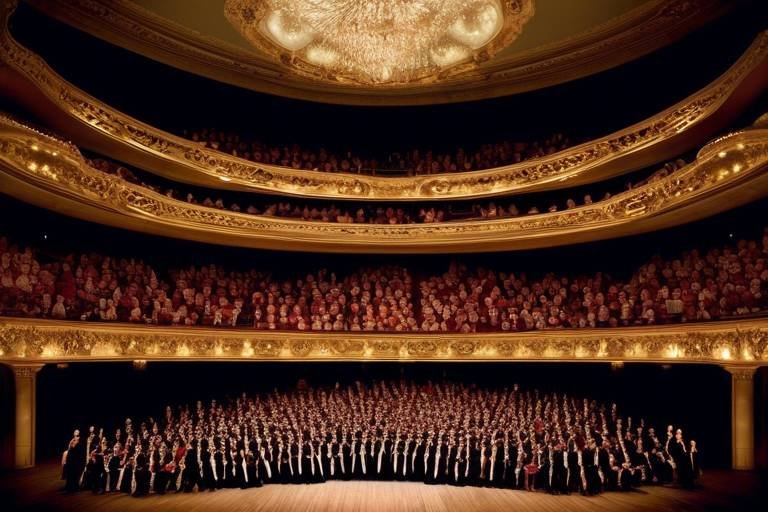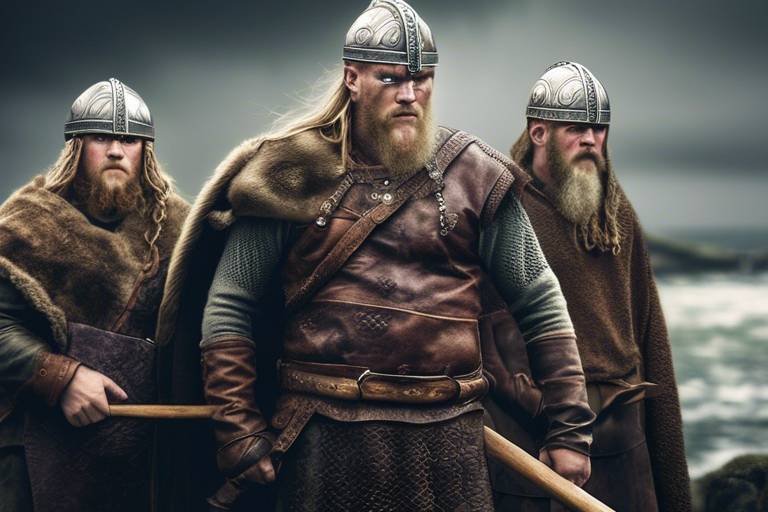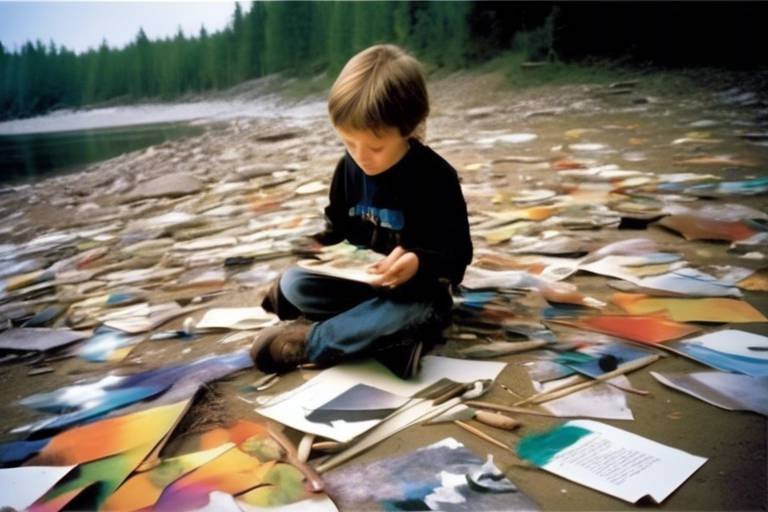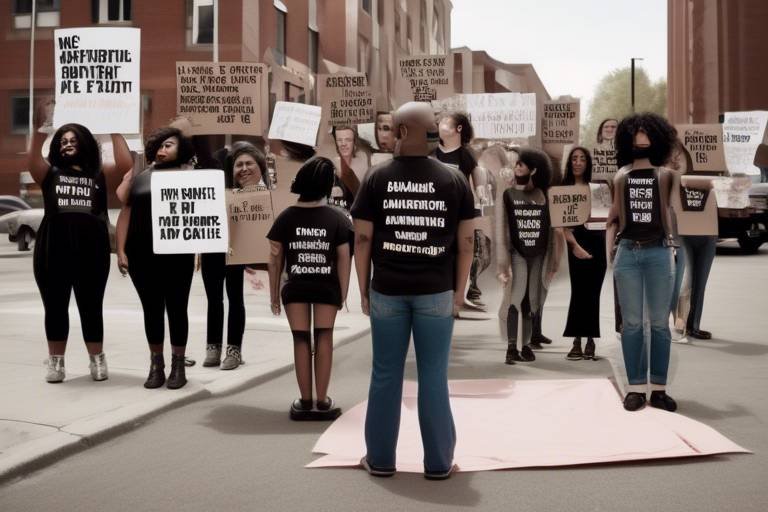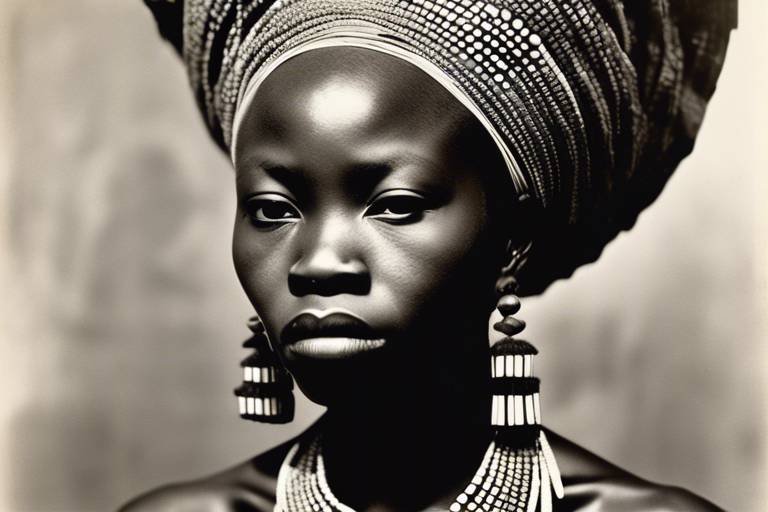The Cultural Impact of Opera on Society
Opera, with its grand performances and powerful storytelling, has long been a cornerstone of artistic expression that transcends time and culture. From the lavish costumes to the soaring vocals, opera has captivated audiences for centuries, leaving a lasting impact on society's values, perceptions, and artistic expressions. It serves as a mirror reflecting the essence of human emotions and societal dynamics, shaping cultural norms and fostering creativity in ways that resonate deeply with audiences around the world.

Historical Evolution of Opera
The Historical Evolution of Opera
Opera, with its origins dating back to the late 16th century in Italy, has undergone a remarkable historical evolution that has shaped the world of performing arts as we know it today. Emerging as a unique blend of music, drama, and visual spectacle, opera quickly gained popularity across Europe, captivating audiences with its grandeur and emotional depth.
During the Baroque period, opera flourished in Italy, with composers such as Claudio Monteverdi pioneering the art form and laying the foundation for future generations of opera composers. The development of opera seria, a serious and heroic style of opera, became prevalent in the 17th and 18th centuries, reflecting the societal values and aristocratic tastes of the time.
As opera spread to other European countries, including France, Germany, and England, it underwent stylistic variations and cultural adaptations, incorporating local traditions and languages into its performances. The Romantic era saw a shift towards more emotionally expressive and melodically rich operas, with composers like Giuseppe Verdi and Richard Wagner pushing the boundaries of the art form.
The 20th century brought further innovation to opera, with composers experimenting with avant-garde styles, atonal music, and modern themes. Opera houses around the world continued to stage classic works alongside contemporary productions, showcasing the diversity and enduring appeal of this art form.
Today, opera remains a vibrant and evolving art form, blending tradition with innovation to captivate audiences and inspire new generations of opera lovers. The historical evolution of opera serves as a testament to its enduring cultural significance and its ability to transcend time and boundaries.

Opera's Influence on Fashion and Style
Opera's influence on fashion and style transcends the boundaries of the stage, weaving a rich tapestry of artistic inspiration and sartorial elegance. The elaborate costumes and dramatic visuals synonymous with opera performances have long captivated audiences and designers alike, shaping trends and aesthetics in the world of fashion. Just as a diva's powerful vocals command attention, opera's influence on fashion commands respect and admiration, setting the stage for daring creativity and avant-garde expressions.
From the opulent ball gowns of the Romantic era to the sleek and modern interpretations of contemporary designers, opera has left an indelible mark on the evolution of fashion. The intricate detailing, luxurious fabrics, and theatrical flair of opera costumes have inspired haute couture collections and red carpet looks, infusing glamour and fantasy into everyday style. Like a well-composed aria, fashion influenced by opera tells a story of passion, drama, and timeless elegance, resonating with those who seek to make a bold statement through their attire.
The symbiotic relationship between opera and fashion is evident in the collaborative efforts of costume designers and couturiers, who draw inspiration from the narratives, characters, and music of operatic masterpieces. Just as a conductor orchestrates a symphony, fashion designers harmonize elements of color, texture, and silhouette to create visually stunning ensembles that pay homage to the grandeur and spectacle of opera. The runway becomes a stage, and the models become performers, embodying the theatricality and emotion of opera through their movements and presentation.
Opera's influence on fashion extends beyond the runway, permeating everyday style and pop culture with its iconic imagery and timeless elegance. Whether it's a subtle nod to the elegance of a bygone era or a bold statement inspired by the drama of a tragic opera, fashion enthusiasts continue to draw inspiration from the world of opera, infusing their wardrobes with a touch of theatrical flair and artistic expression. Like a well-tailored costume, fashion influenced by opera transforms the wearer into a character, allowing them to embody the passion, romance, and intrigue of the operatic world.
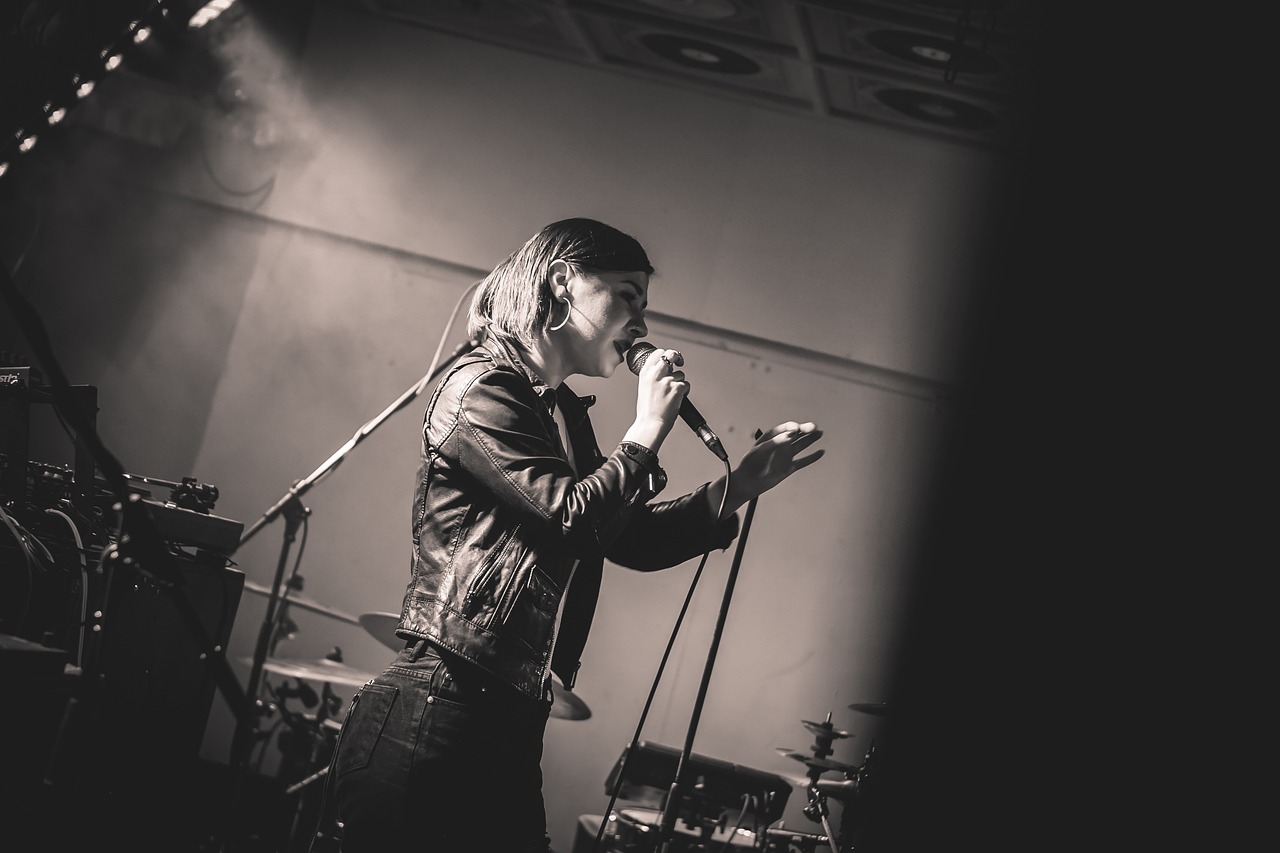
Gender Representation in Opera
Exploring how opera influences society's values, perceptions, and artistic expressions, shaping cultural norms and fostering creativity. This article delves into the historical significance and modern relevance of opera as a powerful form of artistic expression.
Gender representation in opera is a complex and intriguing aspect that reflects societal norms and challenges stereotypes through storytelling and vocal performances. Operas have long been a platform for exploring gender roles and relationships, often pushing boundaries and sparking discussions about equality and representation.
One notable example is the tradition of "trouser roles," where female characters are portrayed by male singers, blurring the lines of gender and challenging conventional ideas of masculinity and femininity. These roles offer a unique perspective on gender dynamics and allow for nuanced portrayals of characters.
Moreover, opera has been instrumental in showcasing strong and independent female characters, challenging the traditional damsel in distress archetype. Female protagonists in operas often exhibit courage, resilience, and agency, breaking free from stereotypes and inspiring audiences with their powerful performances.
Through powerful storytelling and emotive performances, opera has the ability to address complex issues related to gender identity, sexuality, and societal expectations. By portraying diverse and multifaceted characters, opera contributes to a broader conversation about gender representation and inclusivity in the arts.
1. What is the origin of opera as an art form?
2. How does opera influence fashion trends and style aesthetics?
3. What role does opera play in addressing social and political issues?
4. How can opera education programs benefit the community?
5. What are some emerging trends in opera production and technology integration?
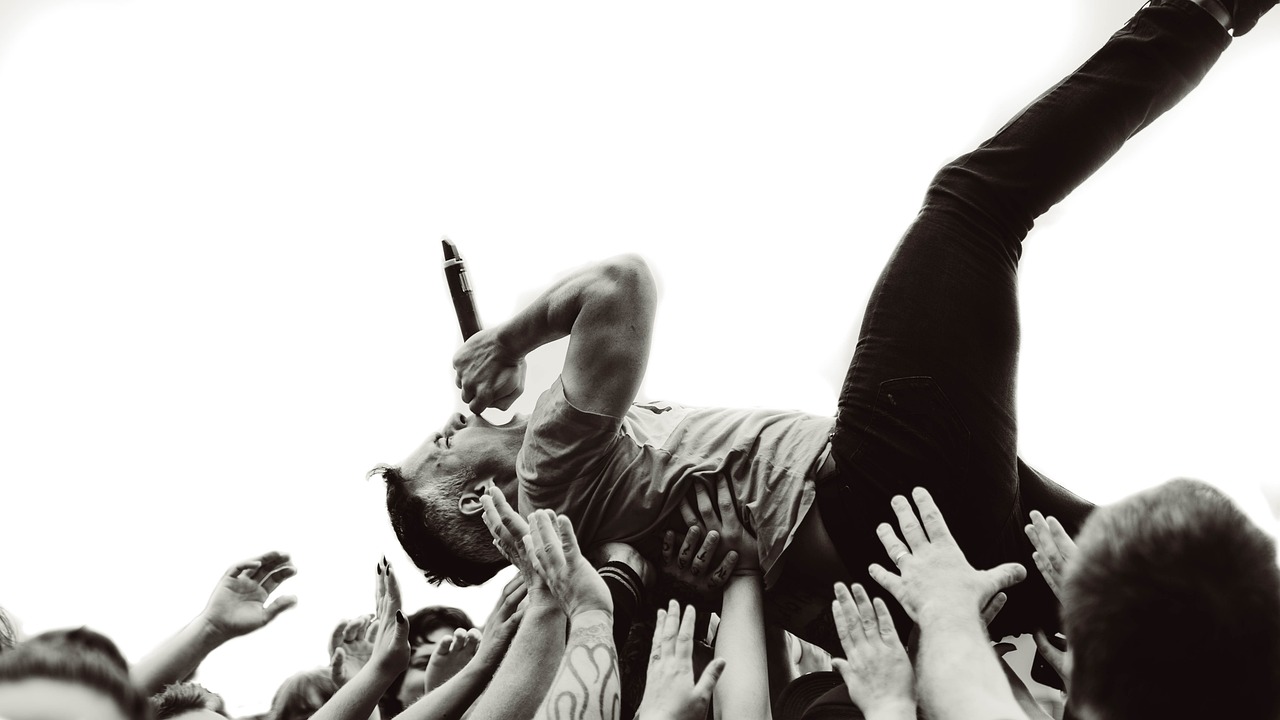
Opera as a Platform for Social Commentary
Opera has long served as a powerful platform for social commentary, allowing composers, librettists, and performers to address pressing issues and engage audiences in thought-provoking conversations. Through the combination of music, lyrics, and dramatic storytelling, opera has the ability to convey complex narratives and evoke emotional responses that resonate with societal values and challenges.
One of the key aspects of opera as a platform for social commentary is its ability to confront controversial topics and spark dialogue on issues such as politics, religion, and human rights. By weaving these themes into the fabric of operatic narratives, composers and performers can shed light on pressing social issues and encourage audiences to reflect on their own beliefs and perspectives.
Moreover, opera has the unique ability to transcend language barriers and cultural boundaries, allowing for the exploration of universal themes that resonate with audiences worldwide. Whether through traditional operas or contemporary reinterpretations, the art form continues to serve as a mirror to society, reflecting its triumphs, struggles, and aspirations.
By engaging with opera as a platform for social commentary, audiences are not only entertained but also challenged to think critically about the world around them. Through the emotional power of music and the visual spectacle of theatrical performances, opera has the capacity to inspire change, foster empathy, and promote understanding across diverse communities.
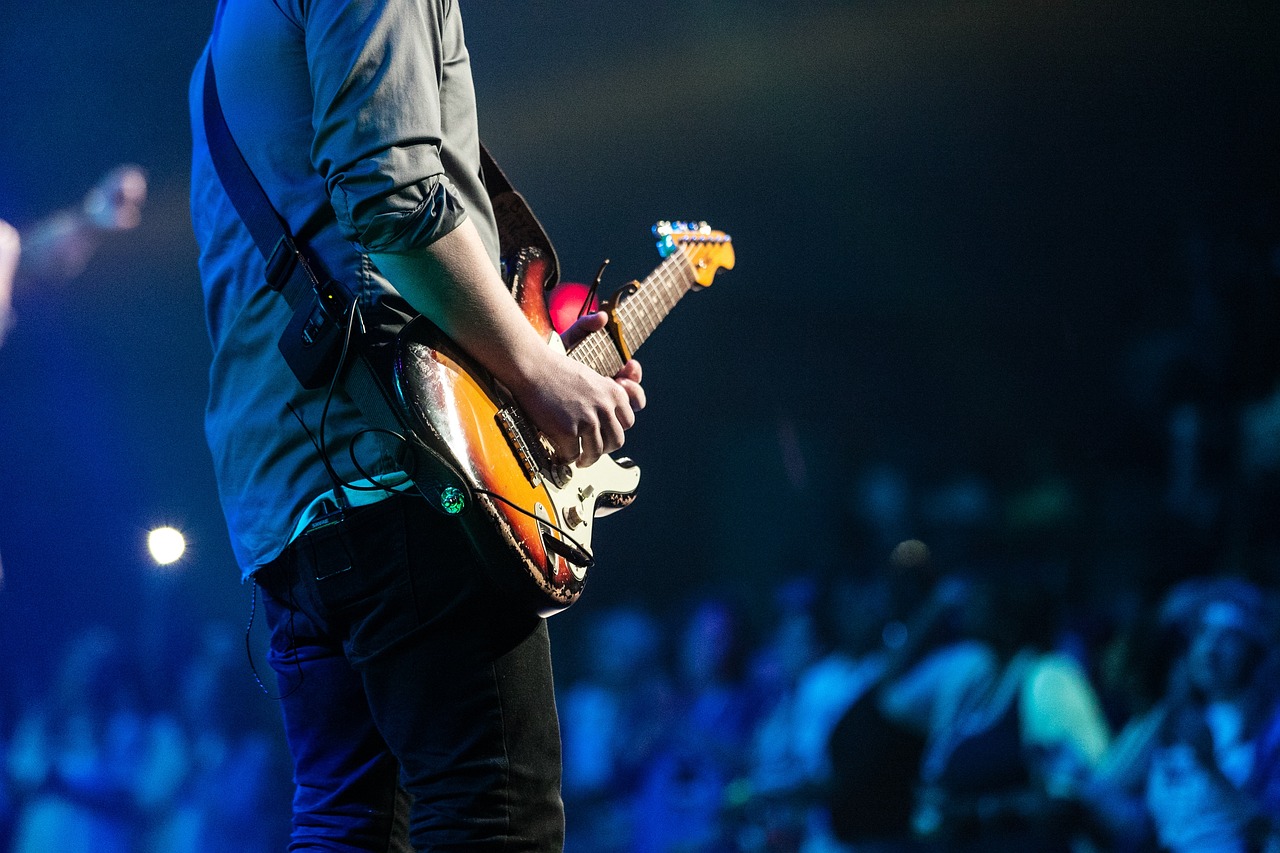
Opera's Impact on Language and Linguistic Diversity
Exploring how opera influences society's values, perceptions, and artistic expressions, shaping cultural norms and fostering creativity. This article delves into the historical significance and modern relevance of opera as a powerful form of artistic expression.
Opera plays a significant role in promoting language diversity and preserving cultural expressions. Through multilingual performances, opera showcases the beauty and richness of different languages and dialects, contributing to global understanding and appreciation of linguistic diversity. By incorporating various languages into its librettos and songs, opera serves as a platform for celebrating linguistic heritage and promoting cross-cultural communication.
Furthermore, opera performances often feature subtitles or translations, allowing audiences from diverse linguistic backgrounds to engage with the art form and connect with the emotional depth of the music and storytelling. This accessibility not only enhances the audience's experience but also fosters a sense of inclusivity and unity among individuals from different linguistic communities.
Moreover, opera singers are trained to master pronunciation and diction in multiple languages, highlighting the importance of linguistic accuracy in delivering powerful vocal performances. This dedication to linguistic authenticity not only enhances the artistic quality of opera but also demonstrates a deep respect for the languages being sung, further emphasizing the role of opera in promoting linguistic diversity.
In essence, opera serves as a melting pot of languages and cultures, weaving together a tapestry of linguistic expressions and vocal artistry that transcends barriers and connects people from around the world through the universal language of music.
- What is the historical significance of opera in shaping cultural norms?
- How does opera influence fashion trends and style aesthetics?
- What role does opera play in challenging gender stereotypes through storytelling?
- How does opera address social and political issues through music and theatrical performances?
- What are some examples of opera's influence on film and television productions?
- Why are opera education and outreach programs important for engaging diverse audiences?
- What are some emerging trends and innovations in opera production and technology integration?
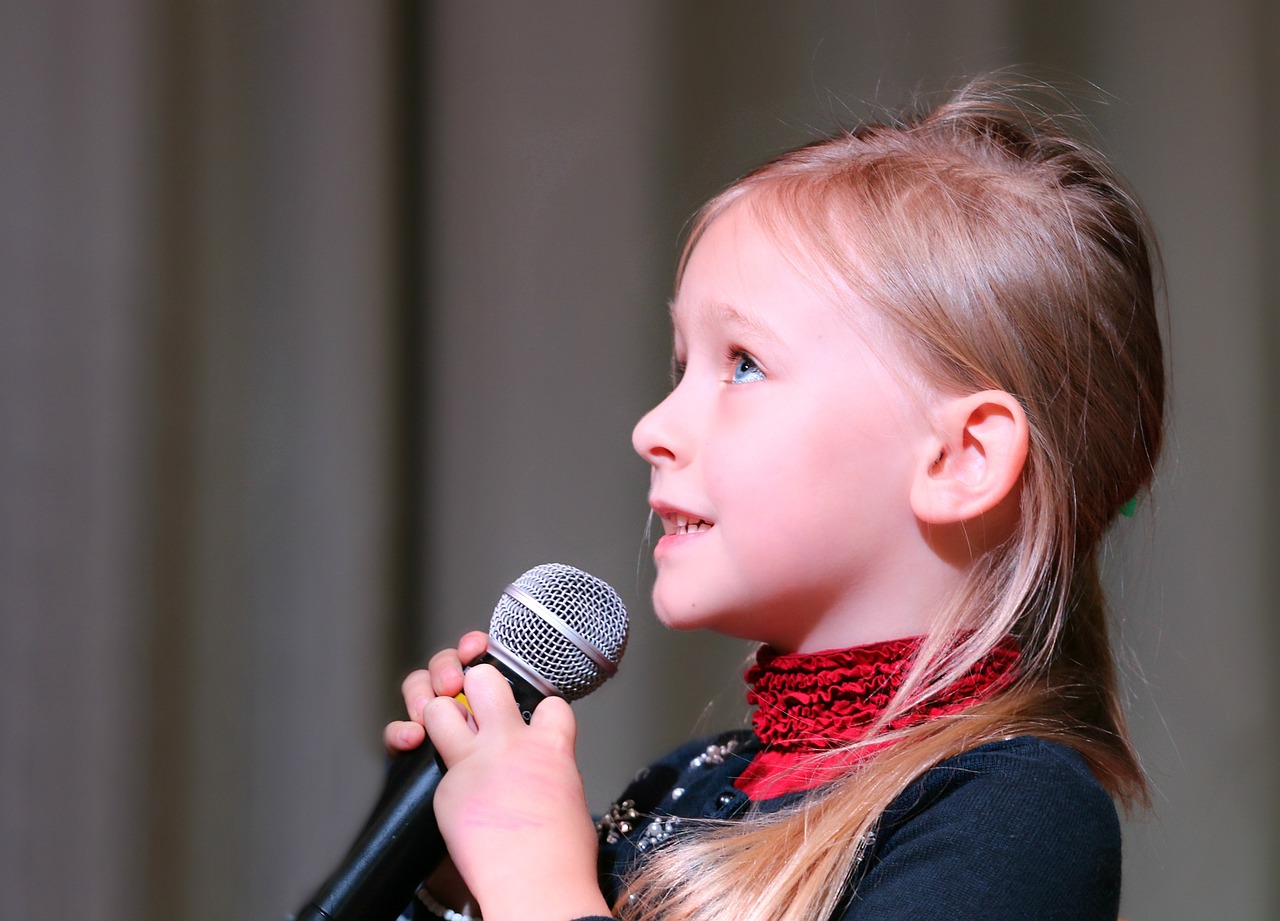
Opera's Influence on Film and Television
Opera's influence extends beyond the stage, making a significant impact on the realms of film and television. The grandeur and drama of opera have captivated audiences for centuries, leading to its integration into popular media. Through adaptations, references, and thematic inspirations, opera has left a lasting imprint on the world of film and television.
One notable way in which opera influences film and television is through the incorporation of its themes and music into cinematic productions. Directors often use operatic pieces to heighten emotional intensity, create dramatic tension, or evoke a sense of grandeur in their films. The powerful and emotive nature of opera music adds depth and richness to on-screen narratives, enhancing the viewer's experience.
Furthermore, opera characters and storylines have been reimagined and adapted for the screen, introducing a new audience to the world of opera. Films and television series have drawn inspiration from operatic plots, transforming them into modern interpretations that resonate with contemporary viewers. This fusion of opera with visual storytelling expands the reach of the art form and introduces it to a broader demographic.
Additionally, opera singers and performers have made notable appearances in film and television, showcasing their vocal talents and stage presence to a wider audience. Their performances not only bring the beauty of opera to new viewers but also highlight the skill and artistry of opera singers in a different context. By featuring opera singers in various productions, film and television platforms contribute to the promotion and appreciation of opera as a unique form of musical expression.
The influence of opera on film and television underscores the enduring relevance and versatility of this art form. By bridging the gap between classical music and visual media, opera continues to inspire and captivate audiences across different platforms, enriching the cultural landscape with its timeless themes and powerful performances.
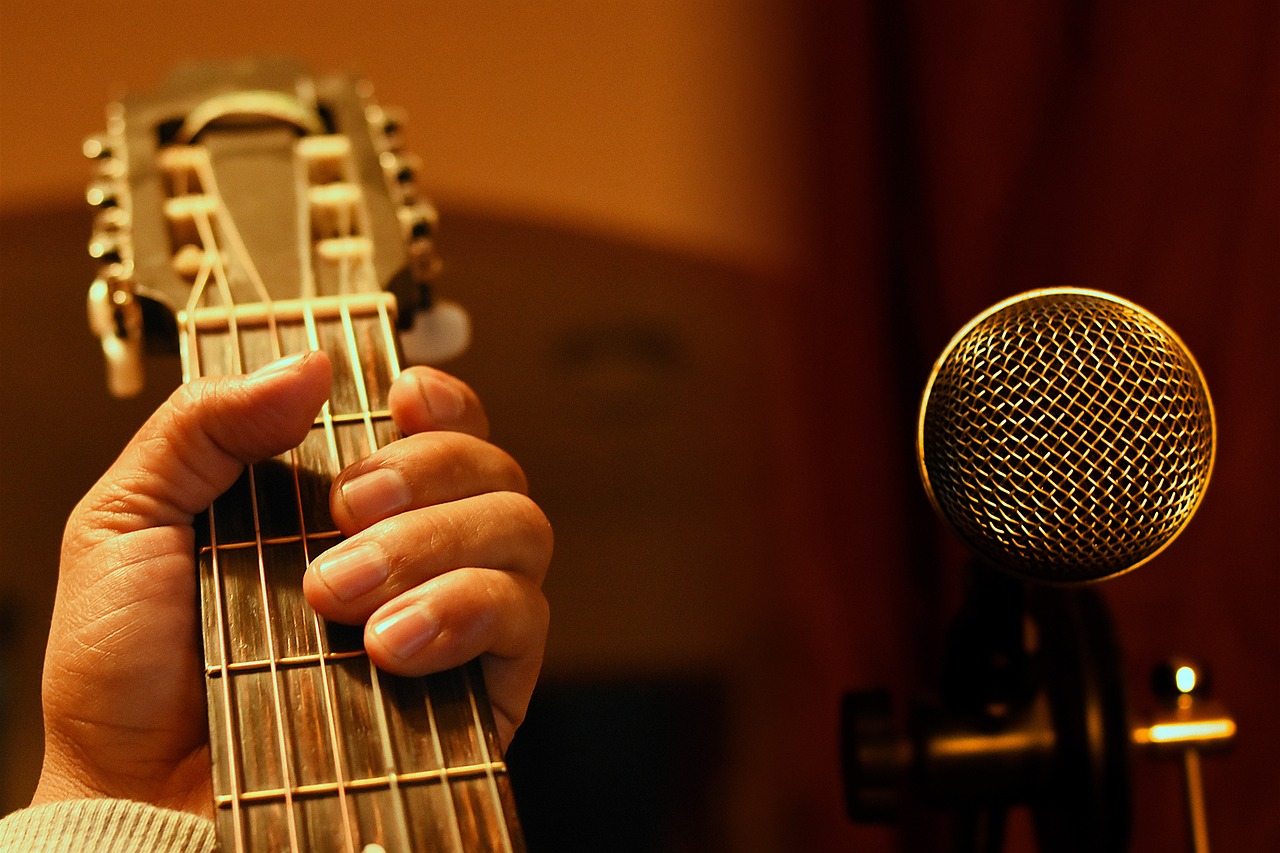
Opera Education and Outreach Programs
Opera education and outreach programs play a crucial role in cultivating a deeper appreciation for this intricate art form among diverse audiences. These initiatives not only aim to educate individuals about the history and significance of opera but also strive to engage communities through immersive experiences and interactive learning opportunities.
Through opera education programs, participants are given the chance to explore the rich cultural heritage of opera, learn about the various aspects of production, and gain insights into the complexities of vocal performance and storytelling. These programs often include workshops, masterclasses, and behind-the-scenes tours, allowing individuals to witness firsthand the dedication and skill required to stage a successful opera production.
Furthermore, opera outreach programs are designed to bring the magic of opera beyond traditional theater settings and into the heart of communities. By organizing free performances, pop-up events, and collaborative projects with schools and local organizations, opera companies are able to reach a wider audience and break down barriers to access.
One of the key objectives of opera education and outreach programs is to inspire the next generation of opera enthusiasts and performers. By providing young people with opportunities to participate in youth opera programs, summer intensives, and mentorship initiatives, opera companies are nurturing talent and fostering a love for the art form from an early age.
Moreover, these programs serve as a bridge between opera and other art disciplines, promoting interdisciplinary collaborations and encouraging creativity and innovation. By partnering with schools, museums, and cultural institutions, opera companies are able to create dynamic programming that resonates with diverse audiences and sparks a passion for the performing arts.
Overall, opera education and outreach programs are essential in ensuring the longevity and relevance of opera in today's society. By engaging with communities, fostering talent, and promoting cultural exchange, these initiatives are shaping the future of opera and enriching the cultural landscape for generations to come.
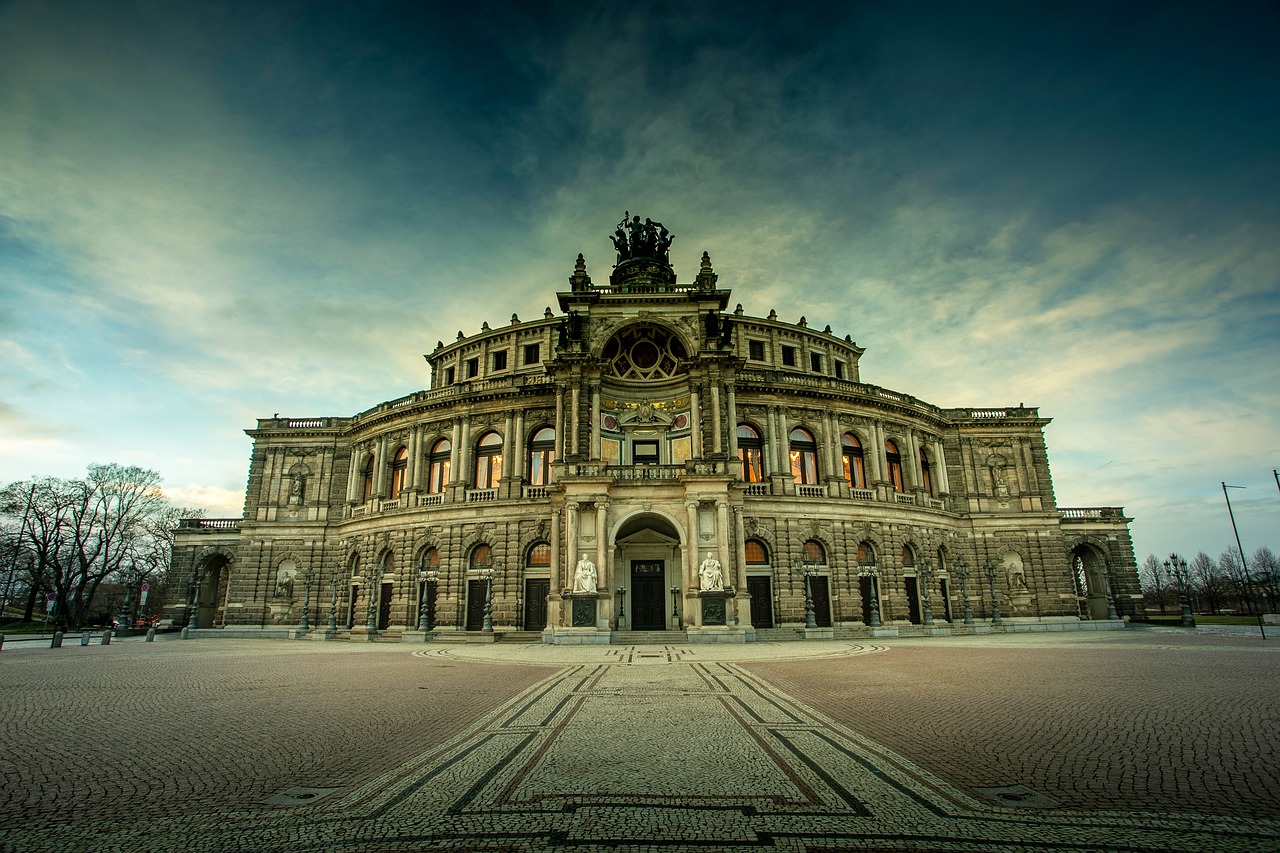
Future Trends and Innovations in Opera
As opera continues to evolve in the modern era, new trends and innovations are reshaping the landscape of this traditional art form. One of the key trends driving change in opera production is the integration of technology, with digital enhancements enhancing stage design, visual effects, and audience engagement. Virtual reality and augmented reality are being utilized to create immersive opera experiences, transporting audiences into the heart of the performance.
Furthermore, opera houses are exploring innovative ways to attract younger audiences and diversify their fan base. Collaborations with contemporary artists, fashion designers, and filmmakers are breaking traditional barriers and bringing a fresh perspective to opera productions. By incorporating modern themes and relevant social issues into their repertoire, opera companies are staying culturally relevant and appealing to a wider demographic.
Another exciting trend in opera is the emphasis on audience interaction and participation. Interactive performances, where audience members can influence the outcome of the story or engage with the performers in real-time, are becoming increasingly popular. This immersive approach blurs the line between the stage and the audience, creating a dynamic and engaging experience for all involved.
Additionally, the use of digital streaming platforms and online content distribution is making opera more accessible to global audiences. Live broadcasts of performances, behind-the-scenes documentaries, and interactive workshops are expanding the reach of opera beyond traditional theater settings, allowing people from all walks of life to experience the magic of opera.
Frequently Asked Questions
- What is the origin of opera?
Opera originated in Italy during the late 16th century, blending music, drama, and visual arts to create a unique form of performance art.
- How has opera influenced fashion?
Opera has had a significant impact on fashion trends and style aesthetics, with elaborate costumes from performances often inspiring designers and setting new trends in the fashion world.
- What role does opera play in addressing social issues?
Opera serves as a platform for social commentary, addressing various social and political issues through powerful storytelling and musical expression, sparking conversations and raising awareness.
- How does opera contribute to linguistic diversity?
Opera showcases linguistic diversity by featuring performances in multiple languages, preserving cultural expressions and promoting global understanding through multilingual productions.
- How can one get involved in opera education programs?
Getting involved in opera education programs can be done by participating in community outreach initiatives, attending workshops, or supporting educational institutions dedicated to promoting opera appreciation.
- What are some emerging trends in opera production?
Modern innovations in opera production include technology integration, immersive experiences, and experimental storytelling techniques that are reshaping the future of opera and engaging new audiences.

